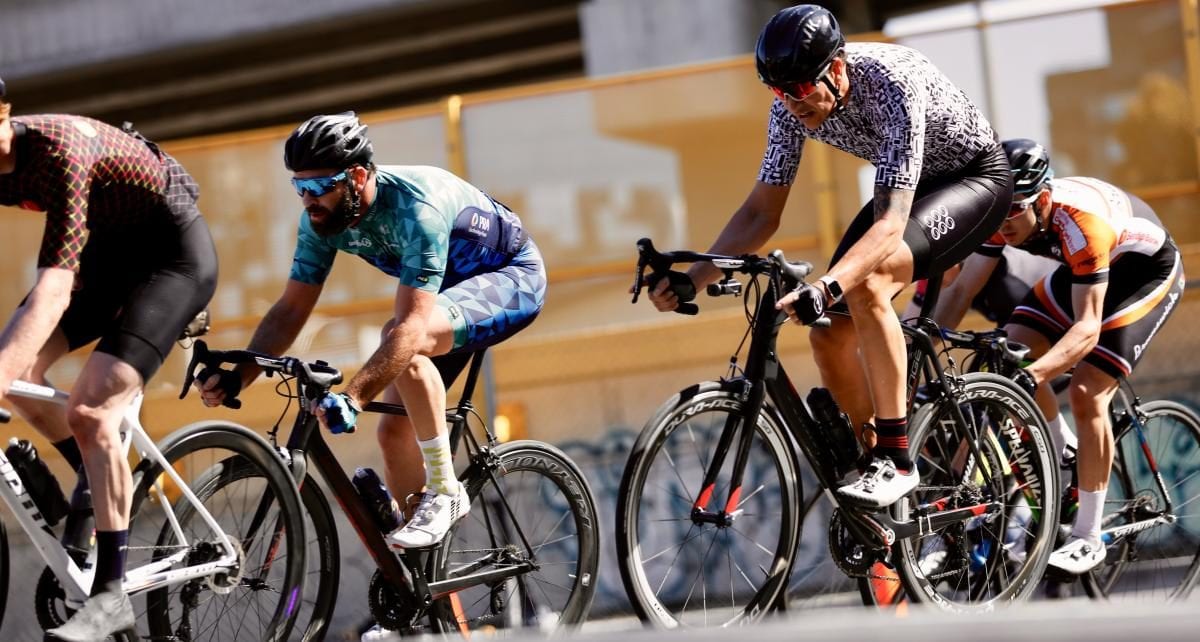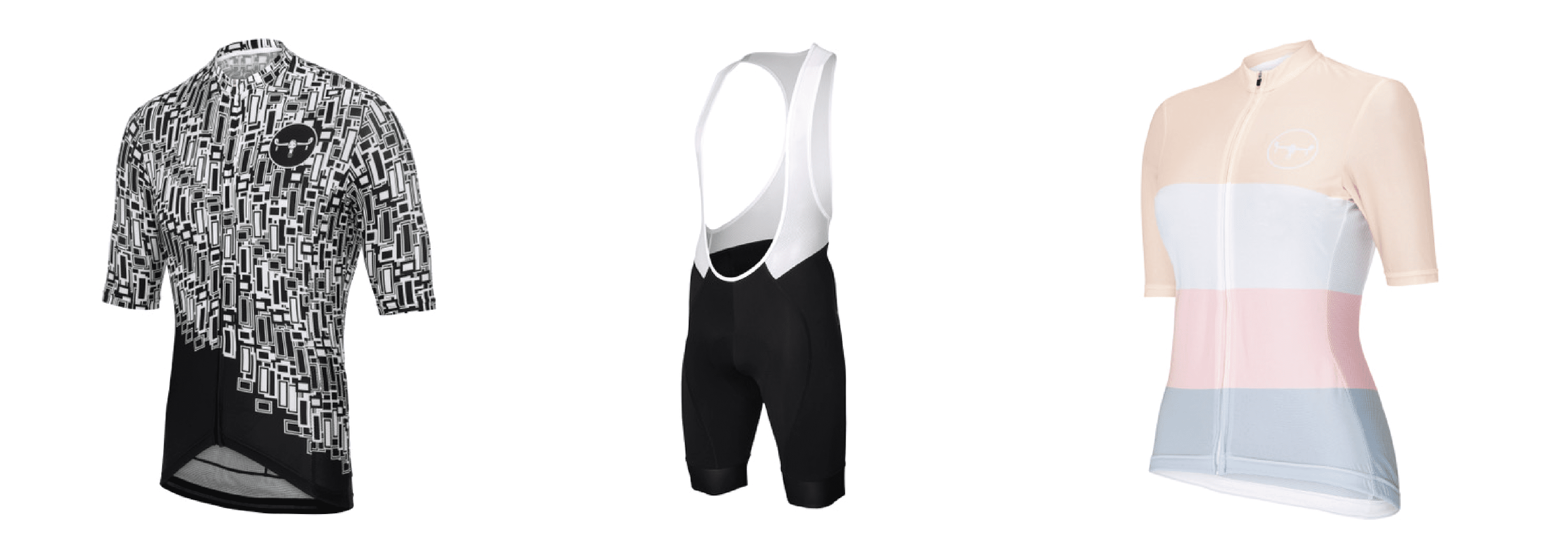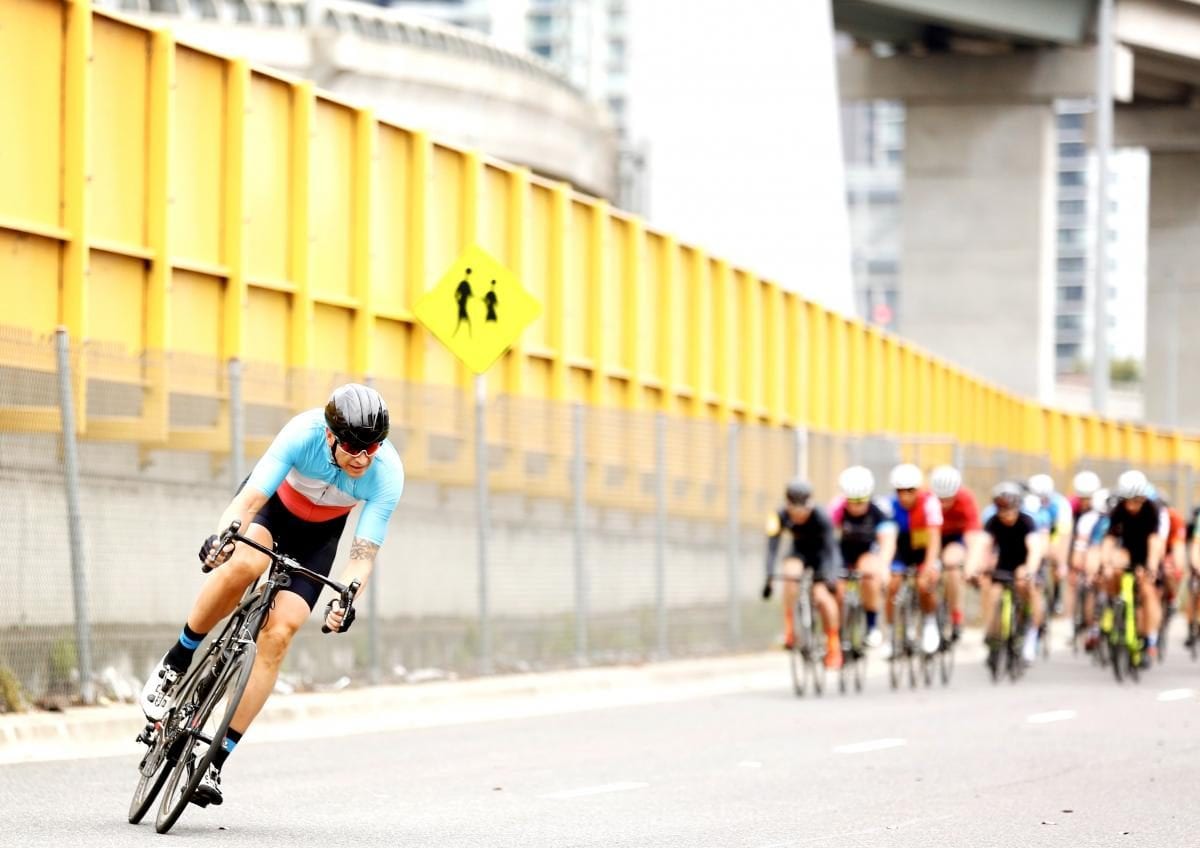Kahu Tawhai: Building brands and building communities
jim cotton Interest Australia 23 January 2019
Kahu Tawhai is a regular contributor to the hub, and the founder of SpudCycling, a Melbourne-based apparel brand and events promotion company. He was born and bred in New Zealand and has spent time living in Singapore. He’s now living in Melbourne, where he moved in December 2017.
So, first things first, can you tell us your story with bikes? Where did the passion for two wheels start?
I started racing bikes a long time ago at high school, so I’ve always been a keen cyclist, but I gave it up for quite a while to play Rugby Union, which of course is a huge thing in New Zealand. However, I was getting injured a lot playing rugby, so I decided to use my running fitness from rugby and background in riding to take up triathlon.
I went straight into long distance events, and I did that for 10 years through my thirties. During that time, I did six IronMan triathlons. However, training for IronMan takes a huge amount of time, and my wife and I were starting to build a family, and so the kids had to take priority. As such, I went back to the beginning and returned to just riding in my late thirties.
Ah, ok I know a lot of people who do IronMan, and training seems to take every spare second of their day.
Yeh, I was doing a full-time job in Technology and Communications and training for 35 hours a week, and had family, so it was pretty full on. I was trying to get to Kona and was doing mad volume!
So you had a career in Technology and a family to support; why did you suddenly decide to set up Spud?
So I still work in my ‘career’ job, although my wife, Nadean, has moved away from her legal career to manage all the behind-the-scene operations and product design and manufacturing of Spud.
It was work that caused me to move from New Zealand to Singapore, where I ended up living for three years, and I spent a lot of time racing bikes while I was there. There was a real problem tracking down legitimate races over there at the time. When I first arrived in Singapore I remember once when I’d entered a race, as had many others, only to find come race day, the event had vanished. The organisers had disappeared, all the money had gone, and the event just vanished into thin air. It turned out that this type of thing was pretty common.
I then decided to join a team, and we were all finding it really hard to track down races on social media or word of mouth, and then we wouldn’t really know if that race was actually legit or just someone trying to take money. So I thought about trying to crowdsource an events calendar, and promoting the events myself. And that was the origins of Spud as a concept.
At this stage, we thought we might try to sell socks too, to help fund the costs of the events calendar – but we didn’t realise how complex cycling socks could be, and how expensive it can be to offer them due to minimum order quantities and all the R&D behind them.
Yes, I’ve spoken to Jules (Unfound Founder) about the work that went into the Unfound socks and it sounds like a real tough process.
Yes, absolutely, there’s a lot more to it than you think, and a lot of initial cost. We eventually decided that given the costs of setting up both an e-commerce site and an events calendar, we might as well go fully into apparel – we had the means to sell a full range of clothing with the site, and would need the funds for the events promotion. We spent about 12 months investigating factories, fabrics etc, and understanding the market and how to make cycling kit. We then eventually fully launched in August 2018, nine months after coming to Melbourne.
OK, so the initial inspiration behind the Spud concept was the events promotion, with the clothing as secondary, to fund it all?
The events calendar was massively informed by my background in New Zealand, experience in Singapore, and current home in Australia; I wanted to connect the dots. I knew a lot of people were travelling from New Zealand and Australia to well-known races in South East Asia, but also missing out on some great events in the region. That got us thinking that a lot of riders from Australia didn’t know about the races in South East Asia, and vice versa.
So the theory behind the events promotion became about creating a ‘corridor’ concept, where we push events in New Zealand and Australia to those in South East Asia, and vice versa, trying to pull riders back and forth between the regions, making them feed off each other.
The apparel was to try to create a income stream to support the promotions, and it also created a common connection between the riders we were speaking to across this large area. We hoped that selling kit would tie riders into a common sense of identity at the events we were promoting, whether they be from New Zealand, Thailand, Australia, wherever.
Am I right in thinking that the apparel has become a bit more the focus of the brand? Looking at your website, it seems that way?
We’re trying to keep it 50/50 in the wider scheme of things, but at the moment we need to get the kit out there to build brand awareness and get some initial income. Then when the name is better known, we can start working more on the event promotion strand.
Regarding the apparel, all the garments contain the six ‘Korus’, which is a Maori symbol. It seems to me that New Zealanders are always very proud of their background. Could you explain a bit more about what the Korus mean to Kiwis, and your decision to include it as so central to the clothing’s identity?
I’m part-Maori as my father is a native New Zealander, and I have quite a connection with that culture. The Koru represents the unfolding and blossoming of the silver fern, the plant that is on the All Blacks (New Zealand’s rugby team) jersey. The Silver Fern represents new beginnings and new life.
We didn’t want to lose sight of our Kiwi beginnings, and we wanted to remind ourselves of where we’d come from. We looked at a few different options and the Korus really resonated for us. I meet so many riders who only started cycling late in life, due to health issues or injuries preventing them doing other sports, so we thought the Koru nicely represents that.
I guess you can be called an Australian brand as much as a Kiwi brand, given that’s where it’s all based.
Over in the UK, Australian clothing brands like MAAP and Attaquer are becoming quite popular. These Aussie brands have a really distinct visual style and identity – you can pick out an Attaquer jersey a mile away as they’re so bold and different, and MAAP have a style that’s less flamboyant but very distinct too. Spud is similar to some extent; it’s very distinctive and quite different – and it does seem quite ‘Australian’.
In Europe, brands like Rapha and even Castelli now keep things quite muted. What do you think it is that encourages this really unique, powerful identity in Australian apparel?
Yeh, I agree, Australian kit is really different. I hear what you’re saying, Australia is unique in that riding a bike is like walking the street, in terms of the need to be ‘in fashion’ and look good. You represent your personality when you’re in day-to-day life through your clothing, and that extends to when you’re on the bike in Australia – your kit says something about you, and people expect that down here. And that does seem unique – I’ve lived in London, New Zealand and Asia and never really experienced it elsewhere.
When we designed the apparel, we started off relatively safe and subtle, but still stylish. We didn’t want to take any risks with our early products; we were testing the water. And we needed designs that would work with other kit; for example, we ensured the jerseys faded to black at the bottom so they could easily be worn with any bib shorts – we knew we didn’t have high brand-awareness and so people wouldn’t just go and buy all our stuff. When we got a bit ‘braver’, our designs started getting a bit more out-there and were more personal to us.
I’m possibly clutching at straws a little here, but it seems that the more general focus on muted and understated kits in the UK and to some extent, USA, represents perhaps a growing trend amongst amateurs in the West towards adventure riding, gravel, bike-packing etc. I know that’s really popular in the East too, but there does seem to be an unusually strong focus on criterium (crit) racing in Australia, which is perhaps brought out in that really vivid, in your face apparel.
The crit scene in Melbourne is something you’re heavily involved in promoting, are you able to tell me a little more about that?
There’s so much going on here, there’s three crits in the week hosted by different clubs in different places, at 6p.m. Everyone really looks after each other and it’s a really close community.
People tend to show up to the same crits week in week out due to location or whatever, and so you really get to know people. You build friendships on the race course and that translates out on to the road. You get to the point where you recognise so many people from the racing that you see loads of them out on the road and you strike up conversation. I’ve made a load of friends like that.
But even in the big teams in the racing, everyone’s really friendly. In the races everyone’s trying to rip each other’s’ legs off, but everyone’s looking out for each other, and you can really feel that camaraderie.
What’s happening with Spud in 2019, can you tell us what’s in the pipeline?
We’re really working hard on that community corridor. We’re going to race the Tour of Friendship in Thailand and we’re working on the promotion for that on hehalf of the organisers – we’re trying to pull as many Aussies and Kiwis to that race as possible. And likewise, we’re going to do a lot of promotion in Singapore, Thailand and Malaysia of events in New Zealand and Australia, like the Lake Taupo Challenge in New Zealand and the Tour of Bright in Australia. We’ve got some awesome classics in Australia too, like the Melbourne to Warrnambool road race, which is 260 km! It was 301 km one year and it qualified as the longest one-day UCI race ever!
Ooof that’s a hell of a long way. No thanks!
On the products side, we’re launching a new range of bib shorts, and some winter products targeted at the Northern Hemisphere. Not so much Europe but we’re really interested in the properly cold places like Norway for example. People can’t find cycling gear there that can handle those temperatures so they’re using ski gear. We’ve developed a couple of cycling jackets for those extreme conditions that we’re getting tested soon.
Now, to wrap up with the most important question – what’s the funniest or strangest thing you’ve ever seen on the bike?
This may be my warped sense of humour; I was racing Tour de Bintan before it was a UCI race, and had hit the wall bad, and so was really struggling. I rode up a small climb and at the top was a rider locked into a standing upright position on the left of the road screaming in pain from cramp, and on the right of the road was another rider lying under a tree trying to get some shade from the 40+ degrees and he didn’t look like he was going to get up any time soon. I remember thinking ‘this is a war zone’ then I smiled #theloveofcycling.
Haha cycling competitively can be a bit of a warzone!
Thanks a lot for your time Kahu. Good luck with Spud in 2019!
-
SpudCycling
Visit site


